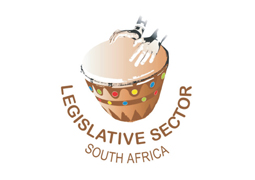
The National Development Plan (NDP) is South Africa’s developmental blueprint. It maps out scenarios that the current and future South Africa would have to face up to and how it can successfully negotiate them.
The summit debate on “Enhanced Oversight Implementation of the National Development Plan, Radical Economic Transformation and Improved Service Delivery”, recast the NDP at the centre of our country’s socio-economic development. But for this to be achieved, there is a need to build stronger legislatures through collaboration. The Sector Oversight Model (SOM) is a case in point.
This emanated during the presentations by the Director of Oversight and Strategic Liaison at Gauteng Legislature, Mr Khaled Khota and the Legislative Sector Consultant, Dr K Brugge, on the topic “Enhanced Oversight Implementation of the National Development Plan, Radical Economic Transformation and Improved Service Delivery”.
According to Mr Khota, oversight is the core of the sector, it is its character hence the sector seeks to ensure that SOM is a tool that legislatures utilise to plan and report against National Development Plan. To date, it is one of the major achievements of the sector in this tenure.
“Walking into the future looking backward, is the motto ingrained in how this model has been conceptualised,” he emphasised. “As we move towards the end of the sector’s term, we must enter into the future looking backward. As it does so, it should build on its successes and keep the challenges in mind.”
This model entrusts legislatures with a responsibility of being the primary components of service delivery, he declared. “This model seeks to ensure that the service delivery machinery pulls together. By their own nature, legislatures are key to the overall performance of the state.”
What is most interesting, he opined, is that there is high political commitment to the model. “It’s critical that the model enjoys a political buy-in. When it is rolled out, provinces need to rally around it.”
The remaining challenge is its customisation to suit the specific needs of each legislature. To date, “some legislatures are implementing it, others are still grappling with it. But the ultimate idea is to find it in every space and work station of legislatures”.
But in his view what remains the legacy of the sector in the fifth parliamentary tenure, is the insertion of NDP oversight framework into SOM. “This will help it to articulate linkages to the NDP. And this must be reflected in the way legislatures report, plan and conduct oversight.”
What emanated from SOM is the Committee Oversight and Accountability Framework. This to ensure that there is a practical implementation of its ethos. “This will determine what kind of oversight to be implemented. What kind of reportage and evaluation such a choice will demand,” he said.
He added that also emanating from this model is the Standard of Oversight, Accountability and Reporting. This because “often the executive is the one that has primary information and we often respond to what they give us. This framework seeks to ensure that it is the legislatures that determine what the executive needs to report on, and how. This will help to standardise the reporting of oversight programmes.”
One of the cogs of this model is the Rapid Response Intervention to respond to oversight needs of service delivery when they arise. “Often legislatures decide when and where to conduct oversight. This intervention enables legislatures to be responsive to people’s needs timeously.”
He holds a strong view that all these interventions that emanate from SOM are necessary for oversight is the nerve fibre of legislatures. And is of the view that if embraced as such, it will continue to be a binding oversight contract that will underpin innovative accountability tools that will be employed by legislatures now and in the future, he said.
Oversight is not about what, where and how. It is about why, said Dr Brugge. He applauded the inception of SOM and the strategic vision of placing it as a mirror of the implementation of the NDP. But to him, the most effective and efficient oversight model is the one that is coercive. And it must also be cultural, and for this to be take place, legislatures must redefine their terms of engagement with the executive.
He is also of the view that such a model must also be informative: be transparent and should provide a better quality of information. Most of all, the model and its processes must gain legitimacy: it must be trusted, and it must align society with government.
He used an analogy of a game of cricket as a model for oversight and to underline it as a relational endeavour. In this game the batman is the executive, the wicket keeper is in charge of service delivery and the legislatures are the spin bowlers of the game. “The turn that is used is a strategic choice that will determine the veracity of a given oversight exercise.”
Integral to oversight is public participation, and according to him, most of the time people who attend these public hearings are unemployed and often they don’t speak on the topic at hand and this defeats some of the model’s good intents.
What is also discouraging, he emphasised, is that even if there is a high level of participation, there is often a low level of the utilisation of submissions.
The model has a dense template and there is still space to make “soft” information and to Introduce a section in Oversight Report Template to show public submissions, how they were utilised, if not, why? And it should have a report-back mechanism for participants.
He also suggested that the “Taking Legislature to the People” oversight needed to be re-engineered to reflect the NDP objectives.
They both agreed to varying degrees that the legacy of this sector’s tenure will not be determined by its achievements, but by the vision it has set forth for the sixth Parliament. SOM and the High Level Panel report are integral parts of its legacy.
By Abel Mputing
20 November 2018

